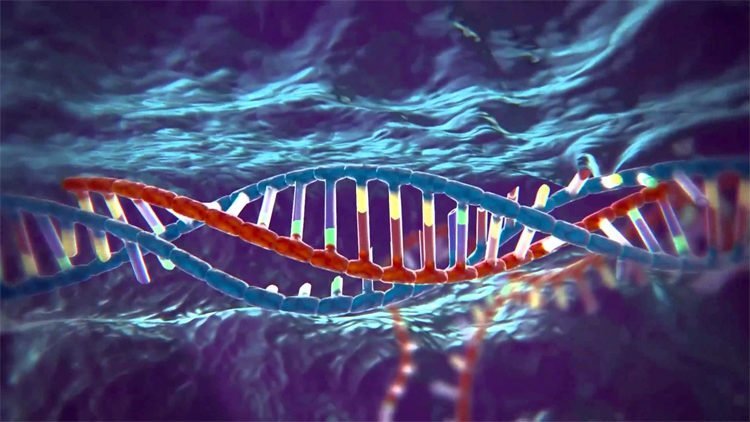
CRISPR – Bacteriophages & bacteria
CRISPR stands for Clustered Regularly Interspaced Short Palindromic Repeats, and is similar to a storage database which is made of genome fragments. Bacteria use this method to store fragments of the virus genomes that they encountered in the past, in order to survive in the future.Bacteriophages are the most abundant entities on the planet and it is estimated that they outnumber their prey by tenfold. This has forced bacteria to become more adaptive in their survival and defense mechanisms, by utilizing systems like CBASS and CRISPR Cas. CRISPR being one of such adaptive methods. Taking a computer and programming as a comparison, when a bacterium encounters a phage, it runs through the fragments of previously encountered phages in order to see if it finds a genome fragment that matches that of the phage it has detected. If the bacterium finds a fragment in this database, it then can destroy the virus. If it does not, the phage will target the bacterium. The CRISPR-Cas (CRISPR associated proteins) mechanism provides a specific sequence of protection from invading nucleic acids, including phages.
The CRISPR-Cas mechanism
This is an evolutionary process that bacteria have developed during their many years of battling bacteriophages. It can be seen as a bacterium’s immune response or body armor against their enemy. Bacteriophages are far from simple organisms, as they too have adapted to the defense system of bacteria. Professor of Molecular Biology and Microbiology and Co-Founder of PhagePro , Andrew Camilli and his colleagues, found that phages have also found a way around the CRISPR mechanism and created their own anti-immune or anti-armor mechanism. For a bacteriophage to successfully undergo a lytic process, the phage depends on the sequence identity between its CRISPR spacers and the target’s chromosomal island. In the absence of such an identity between the two, the bacteriophage’s CRISPR-Cas system can adjust and acquire new spacers in order to evolve and effectively target that specific bacteria through the registration of its chromosomal island which it lacked and continue its cycle.The CRISPR-Cas system is also seen as an evolutionary adaptive process from the part of the phages. It is suggested that during the battle that has lasted over billions of years between bacteria and bacteriophages, it may have happened that random fragments of bacterial DNA were inserted into the phage genome and remained there, being carried on to future phages.
Research into CRISPR and bacteriophages
Scientists were screening phages that can target Vibrio cholera amongst samples that were taken from Cholera epidemics over a 10-year period. The bacteriophages seemed to differ majorly from one another, except for a single ICP1 which was common in all samples. Once they sequenced its genome, they discovered a complete set of genes responsible for the CRISPR system, found in bacteria. This led them to believe that somewhere along the path of evolution, the bacteriophage retained the bacterium’s DNA in its own genome.
ICP1 allows the bacteriophage to steal the CRISPR-Cas genes, which is a bacteria’s adaptive immune system. In programming terms, this can be seen as a hacker that hijacks a programme and immediately hides any trace of the hack, in order to make sure that no other hacker can trace their hacking path.
In another case, microbiologists discovered Cyanophage N1 to be carrying a CRISPR that was taken from cyanobacteria of the species Nostoc, Anabaena and other closest relatives.The discovery of CRISPR in bacteria has given a deeper understanding of the battle between bacteria and phages, as well as opened doors for today's scientific advancements. The CRISPR technique has played a crucial role is gene editing, in both bacteria and humans.
Research sources:
A bacteriophage encodes its own CRISPR/Cas adaptive response to evade host innate immunity.
Kimberley D. Seed, David W. Lazinski, Stephen B. Calderwood and Andrew Camilli. Published in Nature 2013 | DOI: 10.1038/nature11927
Phage Genomics - Small Is Beautiful
Harald Brüssow and Roger W. Hendrix. Published in Cell 2002 | DOI: 10.1016/S0092-8674(01)00637-7
Viruses Infecting a Freshwater Filamentous Cyanobacterium (Nostoc sp.) Encode a Functional CRISPR Array and a Proteobacterial DNA Polymerase B.
Caroline Chénard, Jennifer F. Wirth and Curtis A. Suttle. Published in mBio 2016 | DOI: 10.1128/mBio.00667-16
Bacteriophage capable of infecting the immune system of bacteria using stolen CRISPR chains.
Posted from my blog: https://www.bacteriophage.news/crispr-bacteriophages-bacteria/
Congratulations @innakay! You have completed the following achievement on the Hive blockchain and have been rewarded with new badge(s) :
You can view your badges on your board and compare to others on the Ranking
If you no longer want to receive notifications, reply to this comment with the word
STOPDo not miss the last post from @hivebuzz:
Hi! I am a robot. I just upvoted you! I found similar content that readers might be interested in:
https://www.bacteriophage.news/crispr-bacteriophages-bacteria/